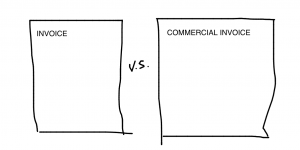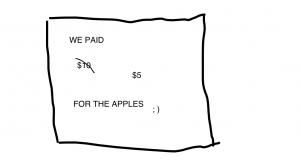What may sound like a novice question to an experienced shipper is really not a dumb one at all. How are you supposed to know that a “commercial invoice” is used specifically in international trade as it provides extra details (such as the country of origin and value for duty) required for customs export and clearance? The adjective “commercial” does not exactly suggest this.
How is it different than a normal invoice?
It’s not, really. An invoice is an invoice, but the amount of detail will change depending on who and what you are selling. If you are shipping abroad, you will need to prepare one, regardless of the situation of the sale. A commercial invoice should have, at least:
- names and addresses of the seller and buyer
- as well as the consignee if a separate entity
- A description of the product sold
- as well as its country of manufacture
- the tariff code, if known
- an end use statement for uncommon items
- the price of the product
- date of the sale and any applicable terms (payment, INCO, or otherwise)
A “customs invoice” is similar, if not exactly the same. Apparently some old school merchants would use the term “consular invoice” interchangeably although I have never heard this.
Whats the easiest way to tell if its a “commercial invoice”?
“commercial invoice” is usually written at the top of the page : ) But seriously, any invoice will do as long as the necessary details are provided. You do not need to write “commercial invoice” on it although this does help distinguish it from a Pro Forma or other invoice type.
Can I make my own commercial invoice?
Of course, there is no standard form that must be filled out, although you can find many templates online.
Can I fill out the commercial invoice, even if I am the buyer and not the seller?
Yes, as long as you know the details of the transaction, the importer can fill out a commercial invoice. In this case, we recommend completing a Canada Customs Invoice. Be wary when declaring your value however, as you may still be asked for proof of payment by Customs (proof of wire transfer or credit card receipts) to back up your claim.
But the goods are shipped free of charge? Do I still need to make one?
Unfortunately yes. There are no exceptions and a commercial invoice will still be required at destination. Many couriers have solved this issue by automating invoice production into online pick up requests, but Customs are known to be skeptical of these so its best to attach a real commercial invoice anyway.
I don’t know the price yet, what do I declare?
You may use a Pro Forma invoice to clear customs which will declare the price and terms you agreed to pay the seller. However, if Customs doubts the value or if the actual cost of the goods augments you will need to provide proof (or file a claim if the entry was liquidated).



